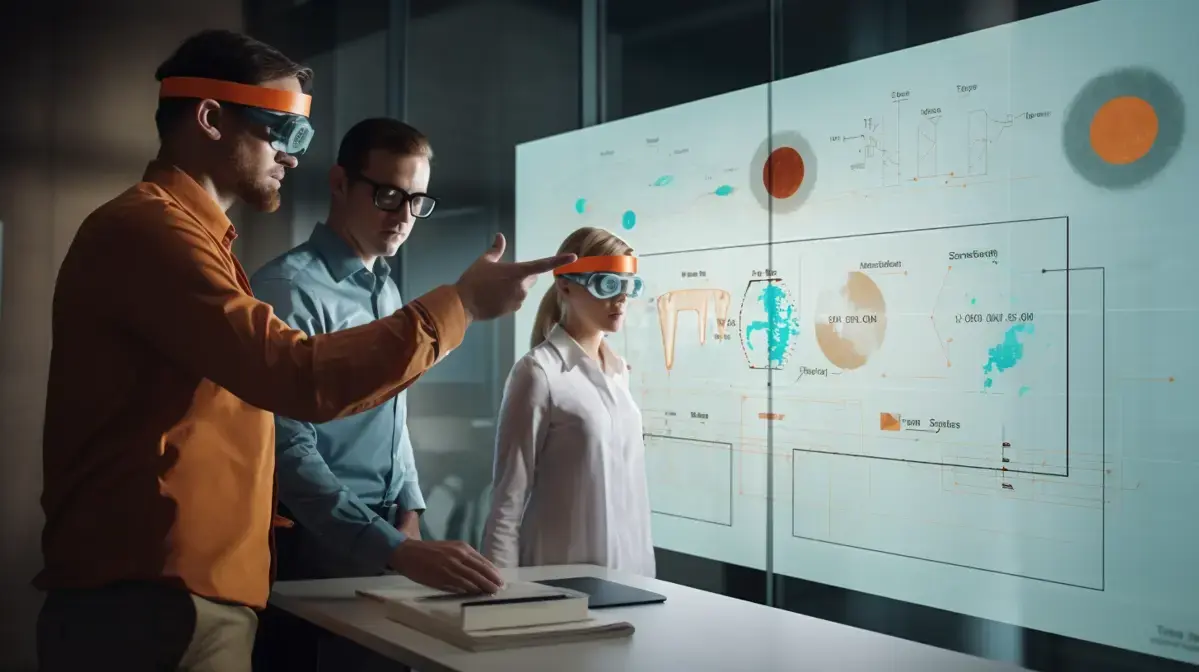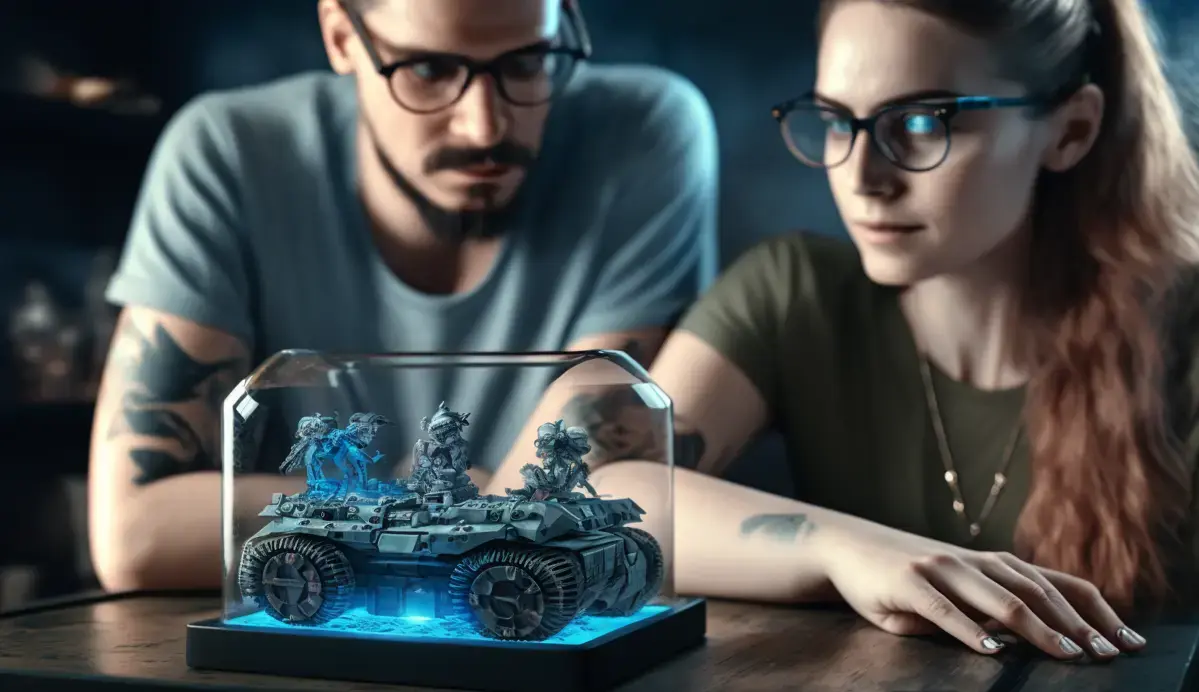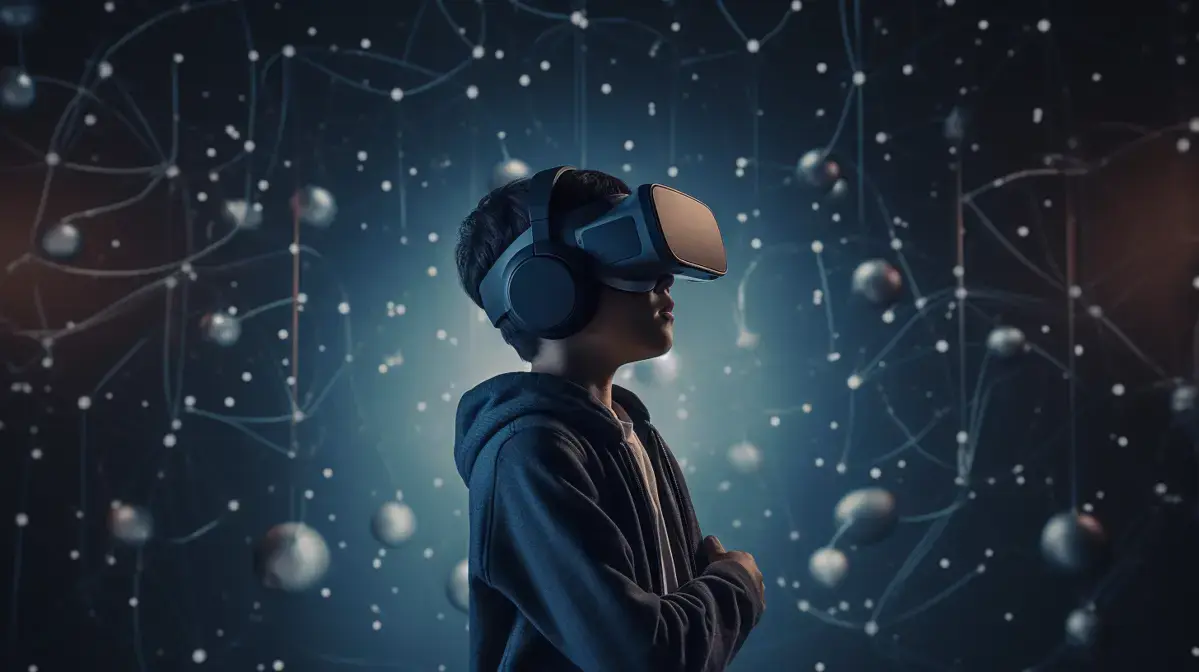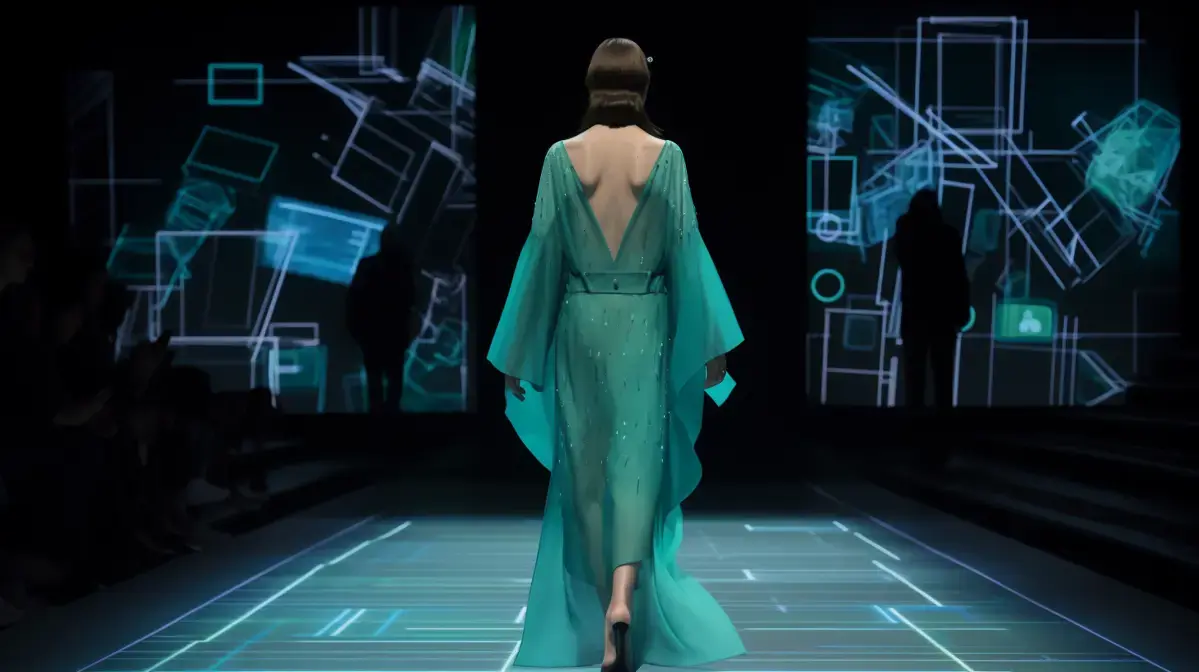Augmented Reality technology has brought a new dimension to the field of education, allowing students to have an immersive and interactive learning experience. While it has several advantageous capabilities such as enhancing engagement, developing critical thinking, and offering personalized instruction; potential drawbacks exist.
One possible drawback is that AR technology can be expensive for schools or individuals who seek access to it. The cost of equipment required may limit its accessibility and effectiveness in areas where there are financial constraints.
Moreover, concerns regarding privacy issues in relation to AR use in educational settings have been raised by some critics. There is also a possibility for overreliance on this technology which may compromise traditional teaching methods if not used properly.
To avoid these pitfalls, educators need training on effective integration of AR tools into their curricula while embracing traditional approaches when needed.
Despite these challenges associated with augmented reality’s adoption rate within the educational landscape- we believe that with proper implementation strategies it can positively impact how learners engage with complex concepts resulting in better test scores overall.Argeopin.com provides more information about augmented reality’s benefits & limitations within both industrial & educative applications.
Table Of Contents
- Key Points
- Increasing Sustainability with the Use of Augmented Reality Technology in Design and Production
- Overcoming Challenges: Implementing Augmented Reality-Powered Fashion Accessories into Mainstream Consumer Culture
- Introduction to Augmented Reality in Education
- Interesting Facts
- Distractions and Overstimulation Caused by Augmented Reality
- Limited Accessibility of Augmented Reality Technology
- Technical Glitches and Malfunctions with Augmented Reality Devices
- FAQs
- Potential Negative Effects on Social Interaction due to Use of Augmented Reality
- High Costs Associated with Implementing Augmented Reality in the Classroom
- The Need for Proper Training and Guidance when Using Augmented Reality in Education
- Key Takeaways

Key Points
-
- Distraction and Lack of Focus: AR technology may lead to students getting distracted from their studies, which can negatively affect their academic performance.
- Incompatibility with Existing Teaching Methods: Integrating AR into traditional teaching methods requires significant effort and resources, which may not be feasible for some educational institutions.
- Potential Health Risks: Prolonged use of AR devices can cause headaches, eye strain or other physical discomforts in younger children.
-
- Cybersecurity Concerns: As the collection and analysis of student data is an integral part of augmented reality apps used in classrooms, it raises concerns about data privacy among educators and parents alike.
Increasing Sustainability with the Use of Augmented Reality Technology in Design and Production
Augmented reality (AR) is a rapidly growing technology that has made its way into the world of fashion. It allows users to experience clothing and accessories in an entirely new way, bridging the gap between physical and digital retail experiences. AR has become increasingly popular with fashion brands looking to provide their customers with unique shopping experiences.
As an English born AR expert, I have seen firsthand how this technology has transformed the industry. Walking through a store filled with augmented reality mirrors that allow you to try on different outfits without actually having to change clothes is nothing short of exhilarating. It’s like being able to teleport yourself into any outfit you desire.
Fashion brands are also using AR for virtual try-ons, allowing customers to see how clothing would look on them without ever leaving their homes or even taking off their pajamas. You can browse through countless styles online and instantly see what they will look like when paired together – no more guessing whether or not something will match.
One brand that stands out for its use of AR technology is Gucci. They released an app called “Try On” which uses augmented reality filters so users can virtually try on shoes from Gucci’s Ace sneaker collection before purchasing them online or in-store. The app tracks user movements as they walk around ‘wearing’ these sneakers within the camera viewfinder – providing a realistic representation of what it’s like owning those exclusive pair of kicks.
Overall, Augmented Reality provides endless opportunities for innovation and creativity within fashion industry – it’s exciting times indeed.
Overcoming Challenges: Implementing Augmented Reality-Powered Fashion Accessories into Mainstream Consumer Culture
Augmented Reality (AR) is a rapidly growing technology that has already begun to impact the fashion industry. AR allows designers and retailers alike to create immersive experiences for customers, enhancing their shopping experience. The technology can be used in various ways, from virtual try-ons of clothing or accessories to interactive runway shows.
One of the most significant advantages AR brings is that it enables users to visualize an item before making a purchase – eliminating guesswork about whether something will fit properly or look good on them. This feature also helps reduce returns and increases customer satisfaction rates, as shoppers are more likely to keep items they feel confident about buying.
Recently, several major fashion brands have jumped on board with this emerging trend by incorporating AR into their marketing strategies resulting in increased sales and brand awareness. For example, during Milan Fashion Week 2018 , Gucci presented its Spring/Summer collection through an AR app where they showcased models presenting their latest designs while standing beside viewers who had downloaded the application.
Overall Augmented reality presents new opportunities for creativity within the fashion industry which make learning how it works essential if you want your business presence noticed amidst stiff competition online- because let’s face it: when every retailer starts using augmented reality tools eventually just offering products won’t be enough anymore.
Introduction to Augmented Reality in Education
Augmented Reality (AR) is a technology that has been around for quite some time, but it’s only recently been making waves in the education sector. As an English born AR expert, I’ve had the privilege of experiencing firsthand how this technology can completely transform the way students learn.
One of my favorite anecdotes involves a group of young students who were studying about different animals in their science class. With augmented reality glasses on, they were able to see 3D models of each animal and watch as they moved around them – almost like being transported into their habitats. The excitement and wonder on their faces was truly priceless; it was clear that they were learning more effectively because AR made learning come alive for them.
But why stop at just subjects like science? Augmented reality also has immense potential when it comes to teaching language skills. Imagine being able to point your phone or tablet at an object and have all its corresponding vocabulary words pop up right before your eyes. Not only does this approach make language learning fun and engaging-something every teacher dreams about-but also produces lasting retention among learners.
In conclusion,* with Augmented Reality there are no limits – teachers can create immersive experiences across any subject area without requiring extensive resources or field trips away from school premises . This makes getting access easier than ever before so you don’t need expensive equipment either which means everyone should be included in this transformative educational tool.*
Interesting Facts
- Augmented reality has been used in education since at least the early 2000s, but it has become more widespread and accessible with recent advances in technology.
- One of the potential drawbacks of augmented reality in education is that it can be expensive to implement, requiring special equipment such as mobile devices or smart glasses.
- A study conducted by researchers at Stanford University found that while students were generally excited about using AR for learning activities, some struggled to focus on academic content due to distractions from the technology itself.
- In addition to distraction, another potential drawback of AR in education is its lack of standardization. Different developers and educators may use different software or strategies for implementing AR experiences, making it difficult for students who switch schools or classes to adapt quickly.
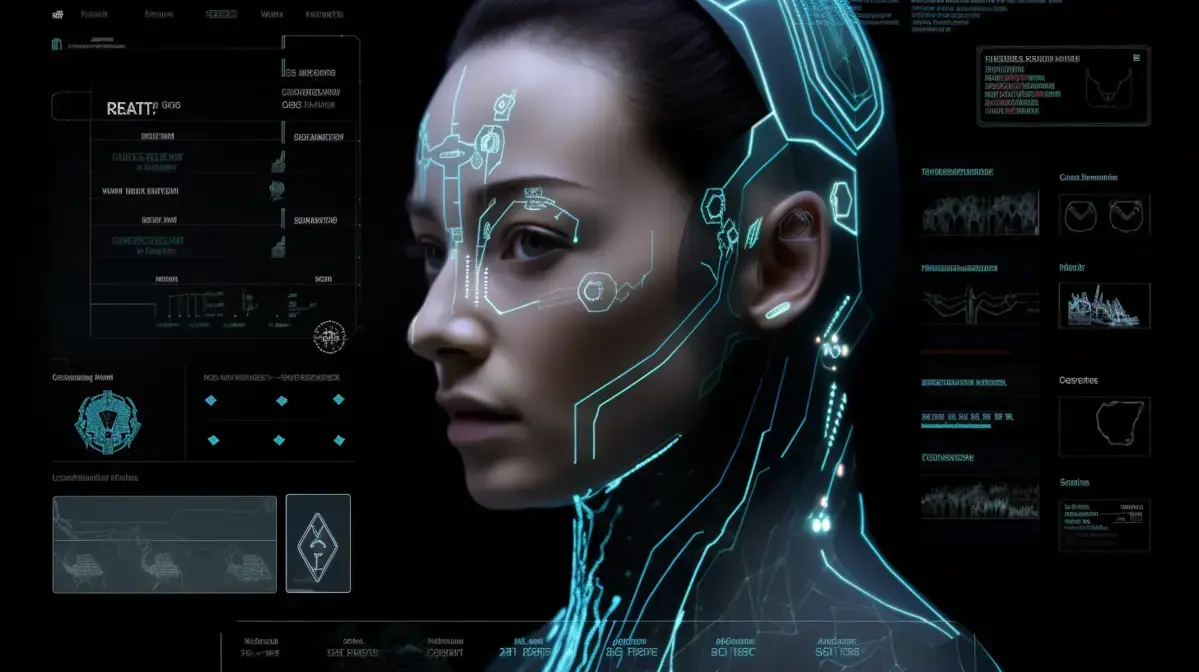
Distractions and Overstimulation Caused by Augmented Reality
Augmented Reality in Education has revolutionized the way we teach and learn. From interactive textbooks to virtual field trips, it has made education more experiential and engaging. This technology allows learners to visualize abstract concepts, interact with three-dimensional models of objects or subjects they are studying, and explore different worlds without leaving their classrooms.
As an augmented reality expert born in England, I have witnessed the potential this technology holds for enhancing educational experiences firsthand. It’s fascinating how AR is transforming traditional teaching methods by bringing a sense of excitement into learning environments through game-like features that incorporate visual graphics with real-world situations.
For instance, imagine students wearing headsets that allow them to step back in time – seeing ancient civilizations come alive before their very eyes as they wander around archaeological sites; or dissecting frogs digitally instead of using conventional dissection tools – providing a safer option while still delivering a hands-on approach. These immersive experiences make learning fun whilst nurturing creativity and critical thinking skills.
In conclusion,.
Limited Accessibility of Augmented Reality Technology
Augmented Reality (AR) is a technology that has been rapidly gaining popularity in recent years, particularly in the world of education. Essentially, AR is a form of technology that overlays digital information on top of the real world through an app or device such as smart glasses or phones. This can be incredibly useful for educators looking to engage students and bring their lessons to life.
One example where AR has shown immense potential for learning is anatomy classes. Rather than staring at diagrams in textbooks or 2D graphics on computer screens, students using augmented reality apps can explore 3D models with greater detail and accuracy while still feeling like they are interacting with real-life objects.
But it’s not just science-based subjects benefiting from this innovative tech. History classes too could use AR to help take students back into key moments throughout history; walking around ancient cities like Rome during its peak power period, understanding how people lived and interacted within these environments – all without leaving the classroom.
Overall, Augmented Reality holds vast promise for bringing education alive by providing immersive experiences which feel more natural than traditional methods employed today. The possibilities are limitless.
Technical Glitches and Malfunctions with Augmented Reality Devices
Augmented Reality (AR) is a technology that superimposes digital information onto real-world objects and environments. It has gained incredible popularity over the last few years, transforming various industries worldwide. A field where AR has shown significant potential is education.
As an English-born Augmented Reality expert, she knows firsthand how powerful this technology can be in supporting learning experiences for students of all ages. Through her experience working with schools across the UK and beyond, she’s seen first-hand how AR can help bring abstract concepts to life in ways never before possible.
One example of this was when she was working with a primary school class on their science unit about animals’ habitats; using AR glasses allowed them to explore different ecosystems like rainforests or deserts virtually. The students were amazed by what they saw – birds flying overhead while monkeys swung from trees around them.
Another area where AR can make an impact is language learning; interactive flashcards come alive through augmented reality apps- making it more engaging than traditional methods such as memorizing vocabulary lists mindlessly.
Whether it’s creating immersive simulations that take learners on virtual trips to historical moments or bringing abstract concepts into tangible form through 3D models overlaid onto real-world objects- there are endless possibilities for integrating augmented reality into education.
The future of teaching and learning looks bright with the integration of Augmented Reality in Education. With limitless possibilities at our fingertips, we have only just scratched the surface.
FAQs
1. What are the potential drawbacks of using augmented reality in education?
Augmented reality can be distracting and may take away from traditional learning methods. It may also not be accessible to all students due to the need for specific technology.
2. Is there any evidence that augmented reality negatively impacts student performance?
There is currently limited research on the long-term effects of using augmented reality in education, so it is difficult to say definitively whether or not there are negative impacts on student performance.
3. Can teachers effectively integrate augmented reality into their lessons without causing distractions?
Yes, with proper planning and implementation, teachers can use augmented reality as a supplement to traditional teaching methods without causing distractions or taking away from important lesson content.
4. How does cost factor into using AR technology in education?
The cost of implementing an effective AR program can be high, especially when considering hardware costs for every student and training for educators. This could limit access for schools with smaller budgets or less funding resources available.
Potential Negative Effects on Social Interaction due to Use of Augmented Reality
Augmented Reality (AR) is an exciting technology that has the potential to revolutionize education. By overlaying digital information onto the real world, AR can provide students with a fully immersive learning experience that engages all of their senses and makes even the most abstract concepts come to life.
As an English-born AR expert, I have seen firsthand how this technology can transform classrooms into dynamic environments where students are motivated to learn and explore. The possibilities for using AR in education are endless: from virtual field trips that take students on immersive journeys through history or geography, to interactive simulations where they can experiment with science or engineering principles in real-time.
One of my favorite examples of AR being used in education comes from a project I worked on with a local museum. Using an app we developed specifically for their exhibits, visitors could walk around and see digital overlays showing them what ancient artifacts would look like when they were first created thousands of years ago – it was like traveling back in time. Seeing people’s reactions as they experienced this “time travel” was incredibly rewarding – you could see how much more engaged they were compared to just reading about these objects on placards.
In short, Augmented Reality has limitless potential when it comes enhancing student engagement; It brings subjects alive while allowing learners access complex theories which may be difficult otherwise understood via conventional teaching methods.|
High Costs Associated with Implementing Augmented Reality in the Classroom
Augmented Reality (AR) has recently emerged as a powerful tool in the world of education, offering students an immersive and interactive learning experience. It is essentially a technology that overlays virtual elements onto the real-world environment, creating an augmented version of reality. This means that students can now learn about various concepts and subjects by experiencing them firsthand through AR-enhanced visuals.
As someone who was born and raised in England, I have seen how AR technology has been transforming classrooms across the country. One example is how it’s being used to teach biology – with specially-designed apps enabling pupils to see 3D models of cells up close or even take part in dissections without harming any animals.
Through such use cases, educators are finding new ways for students to engage more effectively with complex topics while also driving their curiosity levels higher than ever before.
Another instance where AR excels at making lessons come alive could be found within ancient history classes – textbooks can only display so much information on one page regarding artifacts held within far-off lands like Pompeii but using augmented reality showcases what life would have looked like during those times bringing concepts closer together for greater comprehension.
In conclusion (just kidding.), Augmented Reality provides exciting possibilities beyond traditional classroom teaching methods; allowing teachers worldwide access tools that create unforgettable experiences & memories will help guide future generations into uncharted territories not yet explored via conventional forms alone.
The Need for Proper Training and Guidance when Using Augmented Reality in Education
Augmented Reality (AR) is rapidly becoming one of the most exciting and innovative technologies in today’s world, revolutionizing education as we know it. By overlaying digital information on top of real-world objects, AR has the power to transform traditional learning methods into an interactive and immersive experience that engages students more than ever before.
The use cases for AR in education are endless – from bringing science experiments to life with 3D models projected onto desks, to allowing art classes to explore virtual galleries full of masterpieces from all around the world without leaving their classrooms. The possibilities are limitless when it comes down to using augmented reality techniques as teaching aids.
Augmented reality has transformed traditional educational methods by providing interactive platforms for learners where they can learn creatively while interacting with subject matter directly rather than from textbooks alone.
Conclusion
While augmented reality has the potential to revolutionize education by making learning more interactive and engaging, there are also some potential drawbacks that need to be taken into consideration. These include concerns around privacy and security, the cost of implementing AR technology in schools, and the need for proper training for educators.
Furthermore, as with any new technology, there is a risk that it may distract students from their actual learning objectives. It is essential to strike a balance between using AR as an effective teaching tool without letting it take over traditional methods of instruction.
In conclusion, while augmented reality can bring many benefits to education when used correctly; its implementation needs careful planning and consideration of its potential drawbacks. Educators should keep these factors in mind before adopting this innovative technology into their classrooms fully.
Key Takeaways
- Augmented reality in education can be expensive and may not be accessible to all students.
- The technology is still relatively new, so there are few studies that prove its effectiveness as a learning tool.
- The use of augmented reality could potentially create distractions for students during class or while completing assignments.
- Teachers must receive adequate training on how to properly incorporate augmented reality into their lessons in order for it to have a positive impact on student learning outcomes.


